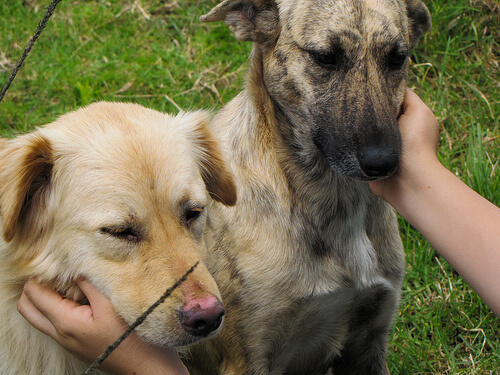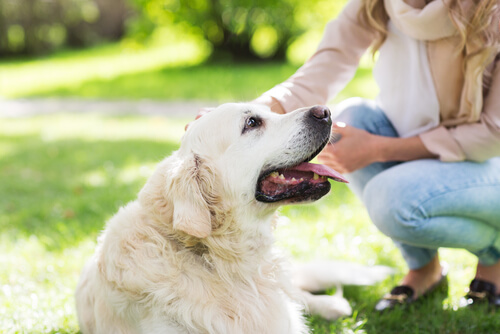The Benefits of Dog Massages

Who doesn’t like a good massage? In addition to the many physical benefits, they help relax us and improve our well-being. Well, you may be surprised to hear that massages are also great for dogs. Have you ever given your dog a massage? Today we’re going tell you all about the benefits of dog massages and explain how to do it.
Benefits of Dog Massages
Our dogs not only love massages, just like we do, but they also benefit from them enormously, both physically and emotionally. On the emotional side, it will make them feel relaxed and loved.

- Improve circulation. This type of external stimulation dilates blood vessels, which in turn improves circulation. Not only will better circulation extend your dog’s life, but it can also help prevent cardiovascular diseases.
- Reduce stress and anxiety. The effect is very similar to what humans experience, because feeling relaxed helps stress and anxiety to go down. Did you know dogs can feel stressed, too? There are many possible reasons for it, a lack of exercise being one.
- Detection of diseases. Massaging your dog can serve as a way to detect lumps or any other abnormalities, like parasites.
- Release oxytocin. This hormone, also known as the “love hormone,” is released with physical contact.
- Reinforce your bond with your dog. You’ll get closer, if that’s even possible, because it’s quality time together and your dog will really enjoy it.
How and Where to Give Dog Massages
There are several factors that you should consider before giving your dog a massage.
- Help your dog relax. Let’s face it: even though your dog loves massages, it’s not easy to make him lay down and relax right away. So start off by petting him in his favorite spots. Your dog will relax and before you know it, you’ll be giving him a great massage.
- With the tips of your fingers, very gently knead your dog’s neck, making circular movements. Make smaller circles for small dogs and larger circles for large dogs.
- Then, lower your hands and continue with your dog’s shoulders. Do not squeeze; you should be making gentle, circular movements.
- Paws and chest. Don’t lift your dog’s legs but rather massage them from top to bottom, and follow the same pattern when moving down his chest.
- Front legs and hind legs. Slide your fingers up and down the dog’s back several times, until you end up at your dog’s hind legs.

- Choose the right time. It needs to be a time when both of you are relaxed, no stress or rush. It might be at night, for example, when both of you are on the couch watching TV or simply resting.
- Gradually increase the length of the massage. It’s possible that your dog might feel uncomfortable initially, so the massages at first may last anywhere from a few seconds to a few minutes. Don’t force it. Massage your dog for as long as he wants, working up to 10 minute massages if he seems to like it.
- Don’t try to be a professional massage therapist. Remember that you are not a professional. So don’t try to do deep tissue massages; leave that to an expert. Your massages should just be for relaxation and catching any health issues he may have.
Remember to ask your vet for a recommendation if you’re looking for a professional specializing in dog massages. If you try to do a deeper massage by yourself, you could hurt your dog.
This text is provided for informational purposes only and does not replace consultation with a professional. If in doubt, consult your specialist.